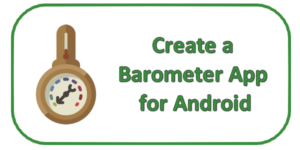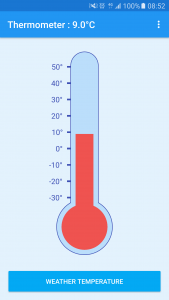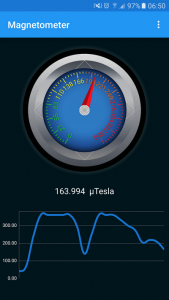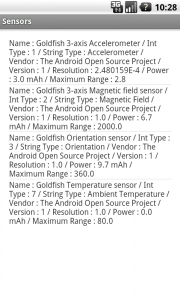Tag archives for Sensors
Creating a Barometer Application for Android
We continue our exploration of the sensors supported by the Android SDK with pressure sensor. To discover how to use this sensor, we are going to create a Barometer Application for Android. As a reminder, a Barometer is a scientific instrument used in meteorology to measure atmospheric pressure. By using the data provided by the pressure sensor of Android devices,…
Learn to create a Luminosity Detector Application on Android
Android devices have a lot of devices to play with. In this tutorial, we are going to play with the ambient luminosity sensor to create a Luminosity Detector Application for Android devices. You can enjoy this tutorial in video on YouTube : To start, we are going to create an ultra simple User Interface for our application. We just need a…
Measure the temperature around you on Android with My Thermometer
Android devices are always more powerful and help us daily to make a lot of tasks. Amongst these tasks, your Android device can help you to know temperature around you but also temperature of your device itself. Freely available on Google Play Store, My Thermometer gives users temperature around them by using their device's sensors. It's the perfect app for…
Learn to create a Magnetometer Metal Detector on Android
Manufacturers continuously add more features and sensors to smartphones. Thus, your smartphone has now a magnetic field sensor which can help you to use your smartphone as a Magnetometer Metal Detector. For example, we have published an application of this kind on the Google Play Store : . Magnetometer Metal Detector lets you to measure magnetic field around you by using…
List all sensors available on an Android device
Android devices have a lot of sensors inside. Android SDK put on the hands of developers all the necessary APIs to take advantages of them and offer to their users applications that use them. In this tutorial, you’re going to learn how to list all the sensors available on an Android device. In a future tutorial, we will see how…




